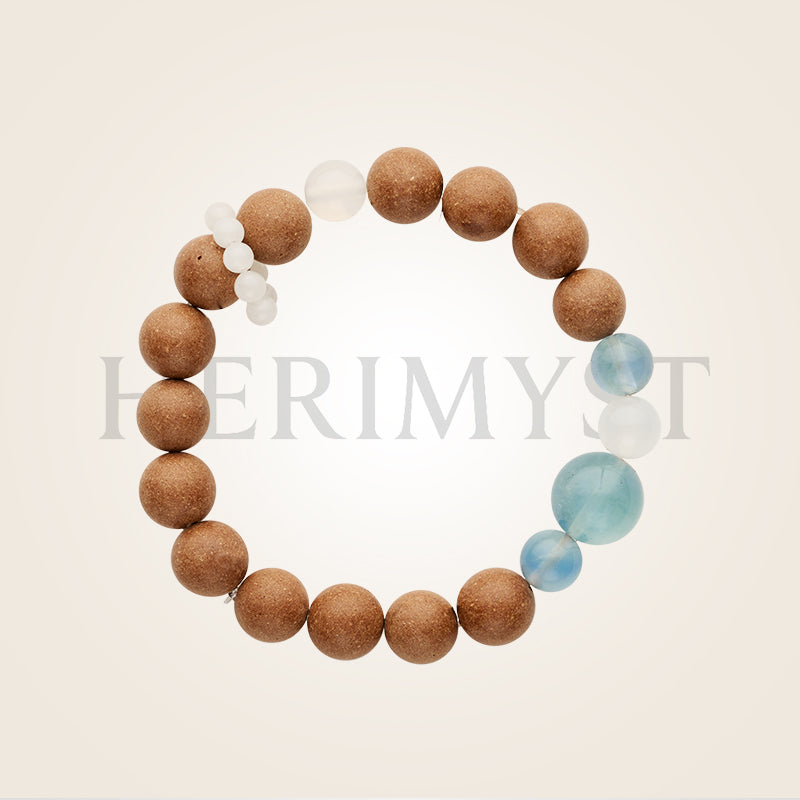Introduction | 引言
In a world overwhelmed by noise and motion, fragrance becomes one of the few mediums that still speak in silence.
At Herimyst, we see incense not only as a ritual of calm, but as a form of architecture — shaping invisible rooms of emotion and memory.
From the still courtyards of the Song Dynasty to the serene corners of modern homes, scent has always been a way of designing space through the senses.
I. The Invisible Architecture of Fragrance | 香气的无形建筑
Unlike sight or sound, fragrance constructs its own dimension — a transient architecture built on air.
The Chinese literati of the Song era described incense as “an art of breathing,” where each whiff could shift one’s inner rhythm.
Song Huizong, the eighth emperor of the Northern Song Dynasty, famously established the Royal Incense Pavilion (造香阁) to refine courtly fragrance, crafting the renowned “Xuanhe Jiangzhen Xiang (宣和降真香)”.

This was not mere indulgence — it was a pursuit of harmony, a quest to transform atmosphere into emotion, and presence into stillness.
Today, when we light incense within contemporary interiors — beside walnut tables, glass windows, and grey walls — that same spirit lingers.
The way scent moves through space still rebuilds balance, turning geometry into serenity.
II. The Balance Between Intensity and Subtlety | 浓淡之间的平衡
A powerful fragrance can dominate a room, demanding attention and exhausting the senses.
The mind begins to chase it, and the body tires from the effort of perception.
True olfactory comfort, however, lies in subtlety — where the aroma is barely there, like the breath of air between pages of an old book.
In traditional Chinese incense aesthetics, this restraint is the highest refinement.
To be “light yet lingering” (清而不绝) was the ultimate standard, allowing the spirit to rest rather than to react.
Herimyst follows this ancient philosophy — our blends are crafted to accompany, not overpower; to dwell quietly within the moment, not dominate it.
III. Fragrance as Emotional Architecture | 香气的情感构筑
Fragrance constructs moods the way architects design light.
A hint of agarwood defines focus; a note of sandalwood deepens thought; a trace of white tea opens clarity.
When these aromas unfold within a room, they change its emotional geometry — walls seem softer, time slows, and the air becomes a bridge between mind and matter.
To burn incense is to rebuild space — both physically and inwardly.
It restores proportion, silence, and breath to our modern rhythm.
IV. The Song Aesthetic and the Modern Home | 宋式美学的当代延续
The Song aesthetic — calm, precise, minimal — is not a lost language but a living lineage.
In Herimyst’s view, each incense ritual is a continuation of that cultural architecture:
“To live beautifully is not to add, but to refine.”
Lighting incense beside walnut textures and cool blue-grey tones recalls the same composure once found in Song paintings — a conversation between simplicity and depth.
Every space, when paired with the right fragrance, becomes a reflection of the self: tranquil, contemplative, complete.
V. Herimyst’s Craft of Calm | 品牌的香艺哲学
Herimyst’s incense creations are not designed merely for scent, but for spatial harmony.
Our blends revive classical Chinese formulas through ancient grinding and blending techniques, then adapt them to modern living.
Whether in a home, a study, or a meditation corner — our incense seeks to rebuild emotional architecture, creating sanctuaries of stillness.
Each wisp of smoke is an invisible wall.
Each fragrance, a door to inner clarity.
Conclusion | 尾声
“The Architecture of Scent” is a philosophy that connects time, culture, and emotion — a bridge between Song Dynasty refinement and modern minimalism.
Through incense, we rediscover how to live within space — not just physically, but emotionally.
Every lighted stick is an act of design, every fragrance a blueprint of peace.
Related Reading | 延伸阅读
This article was also featured on Medium – Herimyst Journal.




